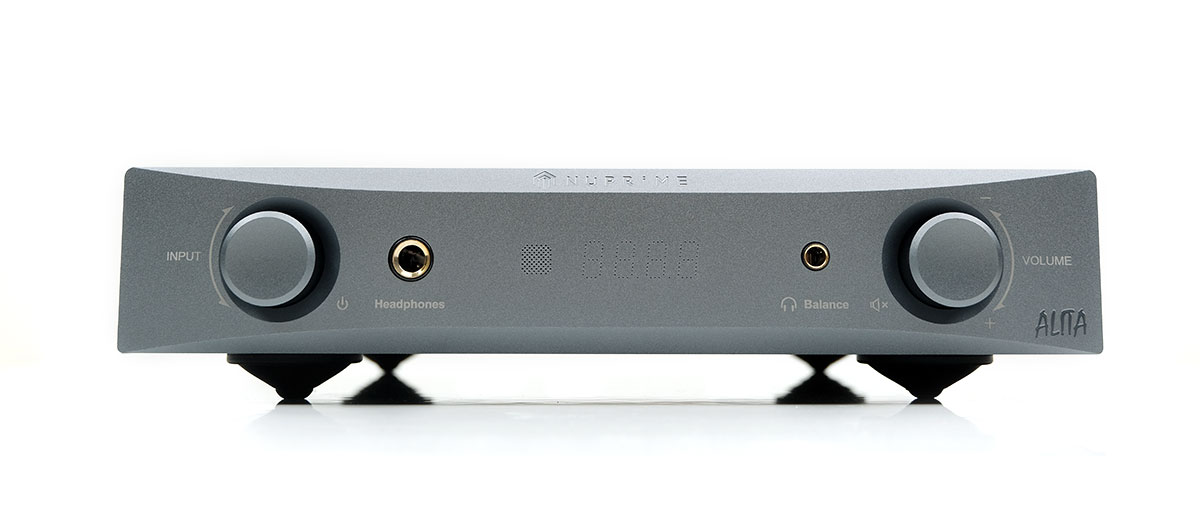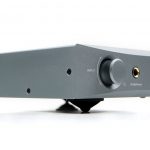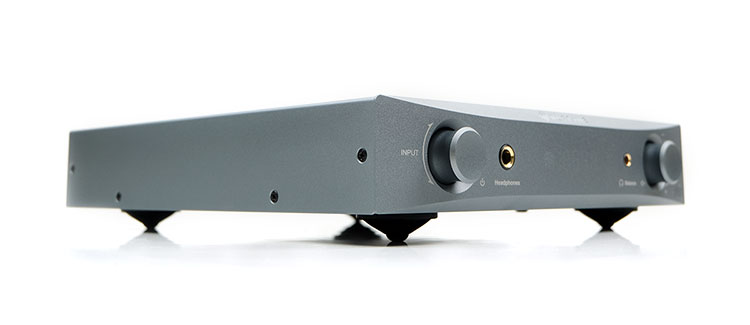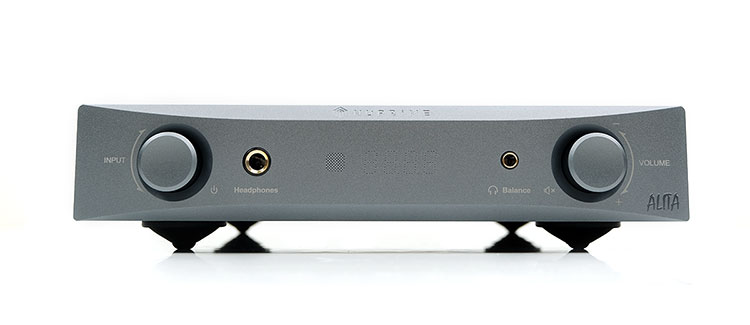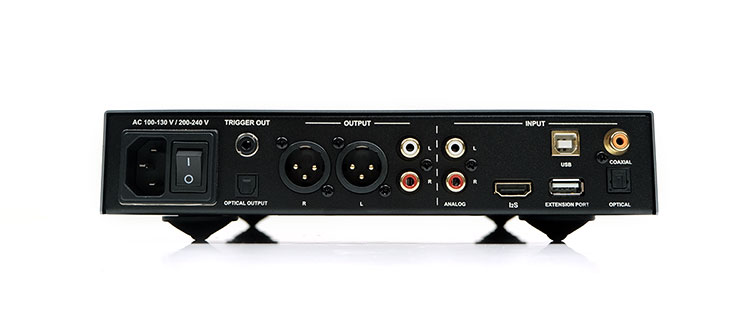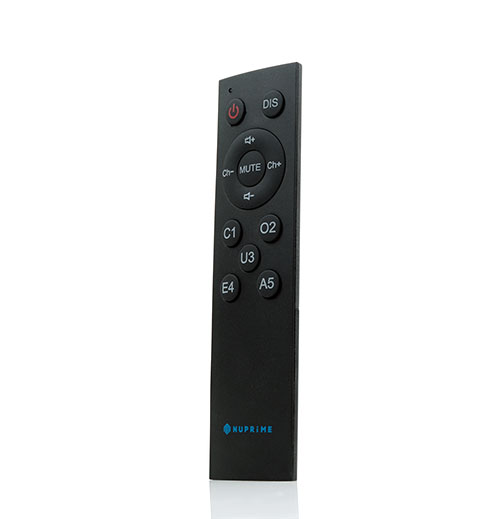The NuPrime Alita is a slimline high-end integrated solid-state headphone amplifier, pre-amp and AK4493EQ implemented DAC. It is priced at €1295.
Disclaimer: The NuPrime Alita sent to us is a sample in exchange for our honest opinion in this review. We thank the team at NuPrime for giving us this opportunity.
To read about other NuPrime products we have reviewed on Headfonics click here.
Note, this review follows our new scoring guidelines for 2020 which you can read up on here.
NuPrime is a brand I have been reviewing now for many years. They have a rabid following though not as visible as say an SMSL or Topping profile. The typical NuPrime HiFi user tends to move in different circles to these brands as far as I can see.
But they do sell in good numbers and it is not hard to see why. The designs are beautiful, the workmanship is tight and they do come up with some genuinely great sounding gear.
The new Alita seems to follow that principle with a similar design philosophy to the likes of the DAC-10 and CDP-9. However, technology does not stand still and neither has NuPrime with a gutted internal DAC, balanced pre-amp, and a new headphone amp design for a not too extortionate price.
It is also the first time they have gone with a specific name for one of their components. Japanese anime and Yukito Kishiro fans will already know this, movie buffs from last year should be familiar also. Alita is an aggressive cyberpunk-ish name and very memorable.
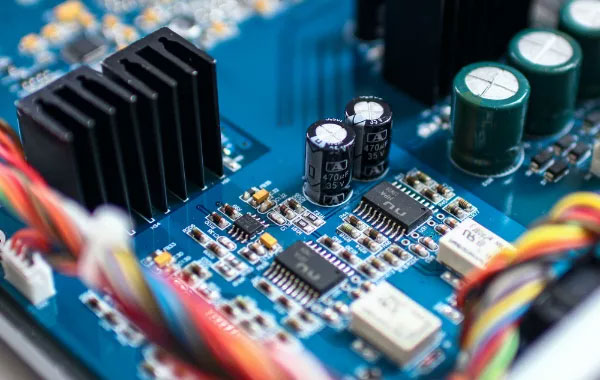
Tech Inside
DAC
NuPrime has opted to use a single AKM AK4493EQ DAC chipset at the heart of its digital implementation inside the Alita. This chipset has been out for a while now, launched in 2018 as the successor to the very popular AK4490EQ which was used inside their DAC-9. The likes of the AK4497/99EQ are now the top dogs with regards to the most up to date DAC specs.
Combined with an XMOS USB Stage the decoding rates for USB-DAC duties are competitive at PCM up to 32BIT/384kHz & native DSD up to DSD256.
You can, however, get higher in 2020 via USB at up to PCM 32Bit/768kHz and DSD512. That is not to say the Alita cannot achieve some of those bleeding edge rates. The inclusion of an I²S connection does mean it can receive and decode at up to PCM 32Bit/768kHz though DSD is still capped at DSD256.
Implementation
However, there is more to it than that and that is one of the big pitches NuPrime are making regarding the Alita, its implementation.
For example, volume control on the Alita is a mix of digital and analog controls with a fairly high-end low impedance FPGA implemented switched-resistor ladder network, (discreet resistors). This gives NuPrime a lot more design control than using off-the-shelf IC blocks or rely 100% on DAC’s own digital volume performance.
A second key area NuPrime makes reference to is an improved power management design for the Alita. The Alita ultra-low-noise JFETS with independent left and right power supplies that come from a multi-rail toroidal transformer coupled to a linear power supply.
Headphone Amplifier
The Alita headphone stage, (PO), offers both a balanced and unbalanced output option, primarily aimed at headphone users with moderate to medium efficiency demands. What makes the Alita fairly unique is that is one of a few new desktop amplifiers out there with a 4.4mm Pentaconn rather than an older 4-pin XLR option. One excellent one that leaps to mind is the Xi Audio’s Broadway amplifier.
Via unbalanced you get 750mW per channel into a 32Ω load, dropping down to 57.5mW per channel into a heavier 600Ω load. Opting for balanced you get double the power at 1.5W into a 32Ω load and 115mW into a 600Ω load.
My personal preference would be for 4.4mm balanced with some planar headphones such as Dan Clark Audio’s Ether 2 or Aeon 2 which I generally prefer at least 1W power and good quality current from their low 50Ω loads.
The 750mW rating for unbalanced might come up a bit short for heavy-duty headphones but it should be ideal for easy to drive headphones and even some in-ear monitors where a lower noise floor and precise control of current are required.
I would advise looking for their DAC-10H integrated solution for harder to drive headphones such as the Abyss Diana Phi, Hifiman’s Susvara, or their relaunched HE6SE. The power output is excellent at much higher 680mW @1kHz into a 600Ω load.
Pre-Out/Lineout
The Alita also has a variable pre-out control using the same FPGA implemented switched-resistor ladder network with the options of both balanced and unbalanced at a standard 2V and 4V per channel respectively.
Volume control is in precise 0.5dB increments using a stepped volume control, (99 steps). That is pretty much a classic NuPrime pre-out design similar to the DAC-10H.
You can also opt for a fixed lineout from the Alita set at 2V and 4V unbalanced and unbalanced should you prefer to control volume directly from a more powerful dedicated analog amplifier.
Performance Numbers
With a maximum THD+N rating of <0.0005% the Alita noise output levels on paper seem competitive with similarly priced all-in-one solutions. For example, NuPrime’s higher-priced CDP-9 DAC and CD combo is <0.0005%.
The SNR seems a little lower at 110dB compared to the CDP-9’s 120dB rating but the CDP-9’s headphone output is very weak at 150 mW @1kHz into a 32Ω load which would go some way to explaining the SNR differences.
Design
In a word, sexy. The Alita faithfully follows the NuPrime House design but that is in no way a bad thing because I love these slimline futuristic form factors.
Quite apart from the aesthetic appeal, they are also very low-profile and light at 2.5KG for what you get inside. Keeping the majority of their component units in the same form factor also means you can stack them to your heart’s content without worrying about stability also.
Supported by their excellent NuPrime vibration-free isolation feet on the base, the Alita is a slim, modern, and curved facia design to the front and a slightly boxier regular build to the rear.
It is constructed of similar aluminum panel housing as previous designs such as the CDP-9 right down to the side panel screw alignment. This time, the finishing is a gunmetal or darker grey which I prefer over the light champaign finish of the CDP-9.
I do note some small design enhancements over the CDP-9 finishing such as the gold-plated rings on the headphone sockets whereas the CDP-9 socket is a black metal finish. This is more in line with their headphone amplifier range including the DAC-10h and the older HPA-9.
On the base, you do have a small discreet red switch to set your voltage at either 230V or 110V depending on your region which is a common feature on NuPrime component designs.
I/O
To the front of the Alita are the PO and main function controls including the LED display. This includes a single 6.35mm unbalanced and a 4.4mm Pentaconn balanced output. To the rear, you get a very clean and tidy lineup of digital and analog I/O that most NuPrime users should be familiar with.
To the far left, you do get a trigger output which some might not be familiar with. Typically, these are 12V cable trigger sockets are used with power amps with the Alita as the master trigger.
Underneath the trigger, you also have a very handy optical output in case you want to bypass the DAC and use the Alita as a mode of transport to another DAC and is capable of up to PCM 192kHz or DoP DSD64.
In terms of analog outputs, you have a standard set of 4V capable 3-Pin balanced XLR outputs and 2V L/R unbalanced connections. Right beside you also have a set of unbalanced analog inputs that will allow you to use the internal pre-amp or headphone amp independent of the built-in DAC.
The rest of the digital inputs include USB-B, I²S in HDMI format, optical, and coaxial. The final one is a USB-A input labeled ‘extension port’. This is primarily for compatible modules devices such as their Omnia WR-1 streamer.
Controls
You can control the Alita either through the front panel or via a new remote control design. I have to say, I found the metal designs curiously unique and cool at the same time. However, the plastic designs, whilst not as cool, are more useable.
The remote control covers all the main bases including volume, source selection, LED display dimmer, and power. It will also give you access to the port extension and I²S/DSD digital input should you wish to hook up their Omnia WR1 streamer or an I²S capable secondary source.
You also have similar functionality to the remote on the front panel via an input selector knob to the left and the volume control to the right which also duals as a pressure-sensitive volume mute. Both have a very precise stepped action, nothing clunky about the engineering here.
Front Panel Display
The Alita front panel uses a display design similar to the DAC-10h and the DAC-9. This is a LED light array behind a series of pinholes embedded in the front panel.
Here you will get information such as input selection initially before switching to the input status and current volume level. You can also view the sample rate of any source signal when it starts in either PCM mode from 44.1k to 384k or DSD 2.8 up to 11.2 (DSD256).
If you are using the Alita in preamp mode, you will also be able to monitor your volume levels from this central console much like the DAC-10H or DAC-9.
Much like these two previous models, the display is easy enough to read but unlike the CDP-9 traditional LED panel, the information tends to read like an old stock exchange ticker. You do get all your information but it is not entirely intuitive until you have a glance through the included manual.
Also, I would prefer to see an option to switch to the sample rate from input/volume and back again rather than have a brief glimpse of the sample rate before it defaults to volume.
Accessories & Packaging
NuPrime does modern component system packaging really well actually. That was always a nice feature of their amps and DACs, the rejection of typical old school HiFi brown boxes. The Alita is no different in that regard with a snazzy but low-profile black box with Alita graphics to the fore.
Inside, you get plenty of foam and plastics vacuum-sealed around the main unit and accessories to the side. That should definitely keep it dust and bump-free on its journey to you.
In terms of accessories, no RCA cables but you do get a USB-B to USB-A female 1m cable to get you hooked up out of the box. The lack of RCA is logical given this is an all-in-one DAC and headphone amplifier and you do not need one to get it operational.
You also get the new plastic remote control, a standard power cable suited to your region and their rather pleasantly informative manual which comes with a nice introduction to hi-res codecs as well as the features of the Alita.
NuPrime Alita Sound Impressions
Summary
I have heard quite a few NuPrime systems over the years that range from punchy and high contrast to silky smooth or neutral and the Alita sits somewhere in between for me.
The Alita is still a ‘musical’ experience with a powerful low-end that I find addictive with my own preferred musical taste. The Alita upper mids and lower treble are not brittle and uneven sounding with a liquid-like refined delivery that is a step up on the older DAC-9/HPA-9 stack.
The Alita sounds planted, dense and powerful, especially sub-100HZ, even on headphones typically milder in bass response such as the Hifiman Ananda. That richness extends into the mids with a broad and rounded vocal texture and solid percussion strikes.
The Alita treble is more on the relaxed or liquid side. It has none of that spikey and hardened edges some of the older AKM implementations I have heard to date. The Alita still retains a focus on the upper mids and lower treble presence but it sounds very refined and even in its delivery.
However, it is not as airy and extended into upper treble performances as I would like and certainly not as bright or energetic as their own CDP-9 which has a more neutral tuning. It has a gentle fade so not as airy or as infused with higher-order harmonic overtones that tend to inject ‘sweetness’ into instrumental notes.
Timbre
Because of that forward, deep, and meaty low-end the timbre on pretty much all of our testing headphones sounded broad, full of texture but also a little on the wet and on the rounded side.
There was less of an odd-harmonic influence with upper treble playing a reduced role in the Alita’s timbre coloration but at the same time, enough of a lower-treble presence to ensure instrumental notes stay well away from sounding lush or overly soft.
The treble has enough of a bite to give vocals and percussion the necessary lift for accuracy. However, compared to the very brighter sound of the CDP-9 your ear will be drawn to the underlying weight and warmth of the note rather than a clean precise attack.
That overtone is typified by dominant piano passages in jazz or lounge recording were the underlying note of a chord progression shines through or has more presence than the top note of the same chord. It is not that it is dull but rather the bias is more centered and heavier sounding in the string timbre.
Of course, that is a beautiful sound for chest vocal pitches or even mixed voice that is not pushed too high. You get some excellent rich texture in the delivery, even with headphones that are not overly prominent for heavily textured vocals such as the Hifiman Ananda.
Staging
The Alita has a bit of low-end bias so depth is absolutely excellent and you do get a strong sense of PRaT with any genre and headphone that can take advantage of that. Headphones such as the Final D8000 and the Hedd Audio Heddphones sound very powerful with some great body on the low-end. Heck, even the lighter tuned Ananda does very well indeed for depth.
Now the separation is good on the low-end but the overall effect is more about forwardness and solidity. For example, the CDP-9 does not have the same forwardness or density as the Alita but it has a more neutral bass with a bit more emphasis on control and separation. As a result, drums hit harder on the Alita but sound more defined and occupy their space better on the CDP-9.
Lower-mids benefit also from the Alita’s tuning with a bit of warmth traveling up and fattening out both the presence and weight of instruments. Vocals tend to position neutral to slightly forward on our test headphones though not as forward and as focused as the CDP-9’s mids to treble bias in staging presence.
Height is perhaps the only weaker spot with our compared system the NuPrime CDP-9. This delivers a higher degree of airiness and treble energy and in fact, you could call it fairly brightt. The Alita is softer, I suspect purposefully so from NuPrime to get that style of natural to warm tuning.
Click on page 2 below for synergy and our comparison to the CDP-9




